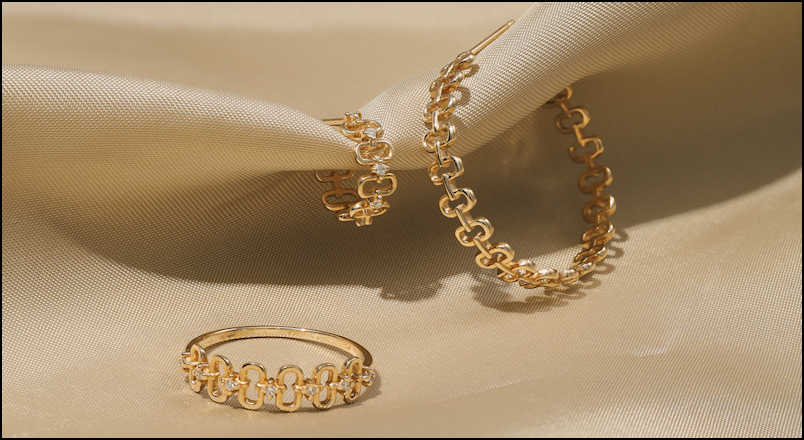In the vibrant city of Brisbane, where innovation meets tradition, the allure of diamonds has taken on a new facet. As technology evolves, so does the jewelry industry, offering consumers a dazzling array of options beyond the natural gemstones. One such trend gaining momentum is the fascination with man-made diamonds, a testament to human ingenuity and sustainability.
Table of Contents
1. Introduction
Definition of man made diamonds: Man made diamonds Brisbane, also known as lab-grown or synthetic diamonds, are produced in controlled environments that mimic the natural conditions under which diamonds form. These gems possess the same chemical composition, physical properties, and optical brilliance as their naturally occurring counterparts.
Popularity of man-made diamonds: In recent years, the popularity of Man made diamonds Brisbane has surged, driven by various factors such as environmental consciousness, ethical concerns, and affordability. This growing demand has reshaped the diamond industry landscape, challenging traditional notions of rarity and exclusivity.
2. The Process
How man-made diamonds are created: Unlike natural diamonds formed deep within the Earth’s mantle over millions of years, man-made diamonds are cultivated in high-tech laboratories through two primary methods: High Pressure High Temperature (HPHT) and Chemical Vapor Deposition (CVD). These techniques replicate the extreme heat and pressure conditions necessary for diamond crystal growth, albeit in a controlled setting.
Comparison with natural diamonds: While natural diamonds are cherished for their rarity and unique imperfections, man-made diamonds offer a more consistent quality and purity. Additionally, the ethical and environmental considerations associated with lab-grown diamonds make them an appealing choice for conscientious consumers.
3. Advantages
Environmental benefits: The production of man-made diamonds requires significantly less energy and resources compared to traditional mining methods, resulting in a lower carbon footprint and reduced environmental impact. By opting for lab-grown diamonds, consumers contribute to sustainability efforts within the jewelry industry.
Cost-effectiveness: Man-made diamonds are often more affordable than their natural counterparts, offering consumers the opportunity to acquire larger or higher-quality gems at a fraction of the cost. This accessibility has democratized diamond ownership, making luxury jewelry attainable for a broader audience.
4. Disadvantages
Perceived value: Despite their identical chemical composition and optical properties, man-made diamonds may still face stigma regarding their perceived value compared to natural diamonds. Cultural associations with rarity and authenticity continue to influence consumer perceptions, impacting the market acceptance of lab-grown diamonds.
Limited size and color options: While advancements in technology have expanded the range of available sizes and colors for man-made diamonds, there are still limitations compared to natural diamonds. Some consumers may prefer the unique hues and larger carat sizes found exclusively in natural diamonds.
5. Quality and Certification
Standards for man-made diamonds: To ensure quality and authenticity, reputable manufacturers adhere to stringent standards and protocols throughout the diamond cultivation process. Independent gemological laboratories assess and certify lab-grown diamonds based on their cut, clarity, color, and carat weight, providing assurance to consumers.
Recognized certifications: Leading certification bodies such as the Gemological Institute of America (GIA) and the International Gemological Institute (IGI) offer grading reports specifically tailored to man-made diamonds, establishing them as legitimate and valuable gemstones in the jewelry market.
6. Market Trends
Demand in Brisbane: In Brisbane’s dynamic jewelry market, the demand for man-made diamonds is on the rise, reflecting shifting consumer preferences towards sustainable and ethically sourced products. Jewelry retailers across the city are embracing this trend by diversifying their offerings to cater to eco-conscious clientele.
Growth projections: Industry analysts project continued growth in the market for man-made diamonds, driven by increasing awareness of environmental issues and changing consumer attitudes towards luxury goods. As technology advances and production costs decline, lab created diamonds are poised to become a mainstream choice for discerning buyers.
7. Consumer Confidence
Factors influencing consumer trust: Building consumer confidence in man-made diamonds requires transparency, education, and assurance of quality. Jewelry retailers play a crucial role in educating consumers about the origin and benefits of lab created diamonds, addressing any concerns or misconceptions along the way.
Addressing concerns: Common concerns among consumers include doubts about the authenticity and long-term value of man-made diamonds. By providing comprehensive information, ethical sourcing practices, and reputable certifications, retailers can alleviate these concerns and foster trust with their clientele.
8. Ethical Considerations
Conflict-free sourcing: One of the key advantages of man-made diamonds is their ethical sourcing, free from the social and environmental impacts associated with traditional diamond mining. By choosing lab-grown diamonds, consumers support ethical practices and contribute to positive change within the industry.
Impact on communities: The shift towards sustainable and ethical practices in diamond production has broader implications for local communities in diamond-producing regions. By reducing the demand for natural diamonds, lab-grown alternatives promote social responsibility and economic development in these areas.
9. Marketing Strategies
Target audience: Marketing campaigns for Man made diamonds Brisbane often target environmentally conscious consumers, millennials, and those seeking unique and customizable jewelry options. Emphasizing the sustainability and affordability of lab-grown diamonds appeals to this demographic’s values and preferences.
Brand positioning: Jewelry brands that prioritize sustainability and transparency in their supply chains can differentiate themselves in the market and attract socially conscious consumers. By aligning with ethical principles and offering high-quality man-made diamonds, brands can carve out a niche in the competitive jewelry industry.
10. Buying Guide
Factors to consider when purchasing: When purchasing man-made diamonds, consumers should consider factors such as diamond quality, certification, budget, and personal preferences. Consulting with knowledgeable jewelers and requesting detailed information about the diamond’s origin and characteristics can aid in the decision-making process.




